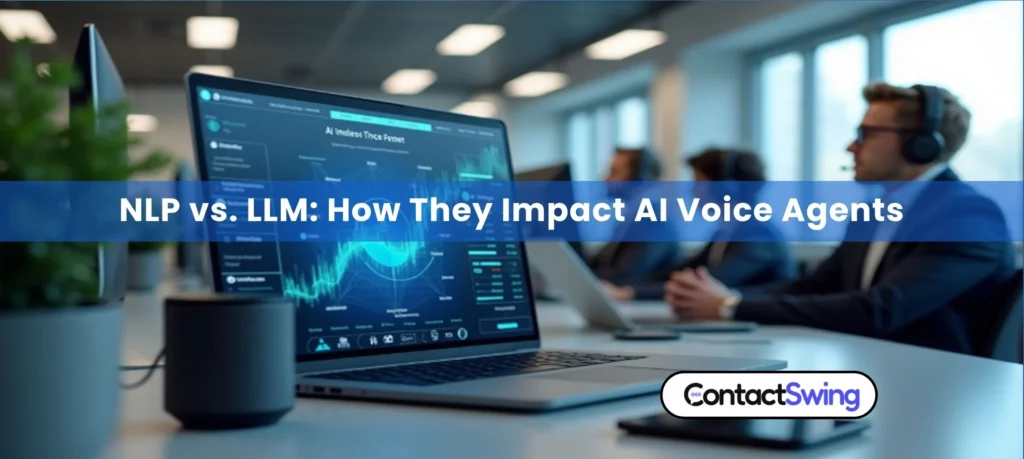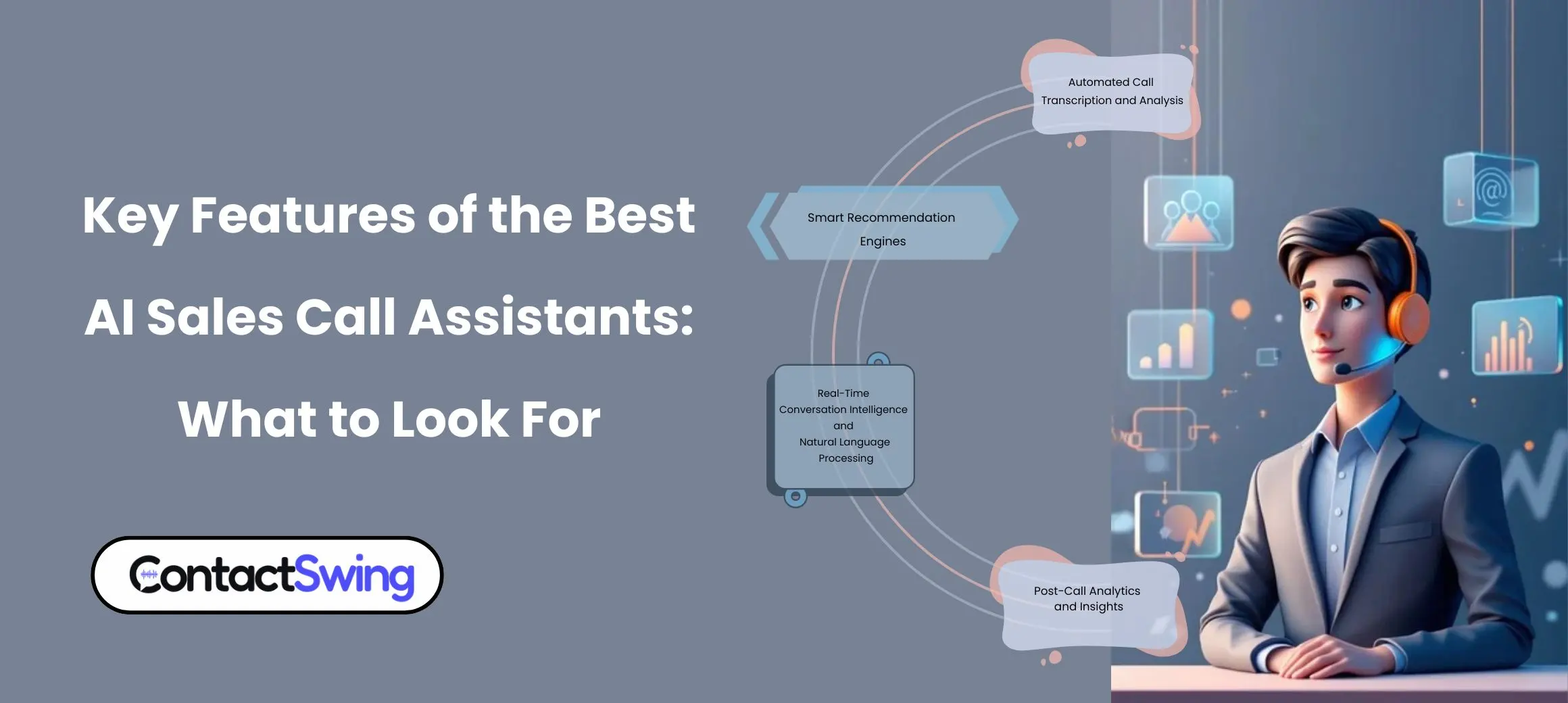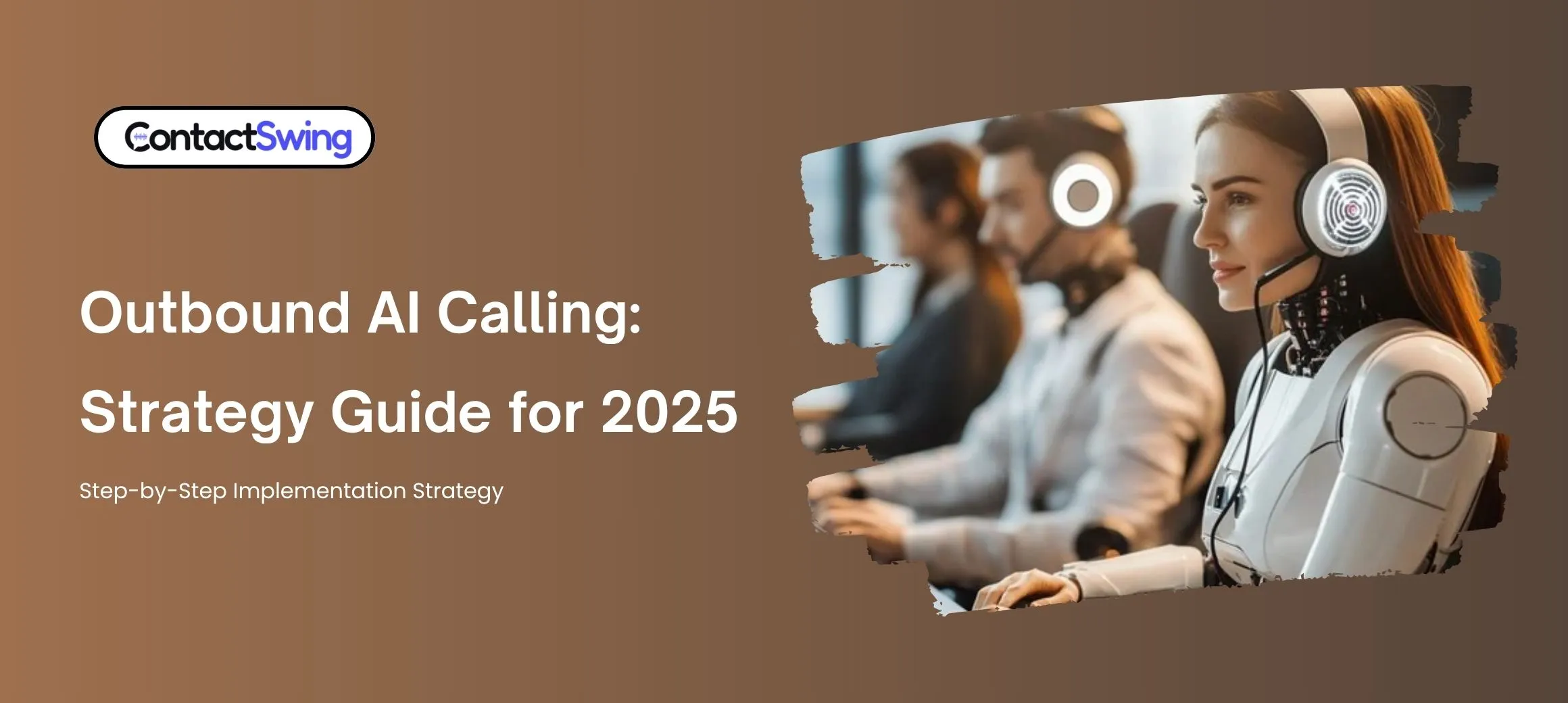
As artificial intelligence reshapes communication and automation across industries, two of its most powerful tools – Natural Language Processing (NLP) and Large Language Models (LLMs) – stand at the forefront. Whether you’re a healthcare provider managing patient calls, a real estate agent responding to buyer queries, or an insurance firm handling claims intake, choosing the right AI can significantly impact your efficiency and customer experience.
So, how do you navigate the great NLP vs LLM debate?
In this in-depth guide tailored for U.S.-based business leaders, we’ll explore what sets NLP and LLMs apart, where they converge, and how combining them — especially with platforms like ContactSwing’s AI voice agents, unlocks undeniable value. Get practical strategies, real-world examples, and insights to help you choose the best technology for your needs.
Table of Contents
1. What is NLP?
2. What are LLMs?
3. NLP vs LLM: Key Differences
4. Real-World Use Cases by Industry
5. When to Use NLP vs LLM or Both
6. Combining NLP and LLM in Smart Voice Automation
7. AI Agents or Human Agents? A Comparison
8. Why ContactSwing?
9. Try ContactSwing’s AI Voice Agent Free
What is NLP?
Natural Language Processing (NLP) is a branch of artificial intelligence that allows computers to analyze, understand, and generate human language. It’s not new – NLP has been around for decades – but its current applications in voice tech, customer service, and analytics are more relevant than ever for local businesses and enterprise teams alike.
Core Capabilities of NLP:
– Named Entity Recognition (NER): Identifying people, places, or dates in text
– Sentiment Analysis: Detecting tone and emotion in written or spoken communication
– Part-of-Speech Tagging: Understanding grammatical structures
– Intent Recognition: Categorizing what the speaker wants to do
– Speech-to-Text / Text-to-Speech: Converting voice inputs into machine-readable formats and vice versa
NLP works best for structured tasks, like transcribing voicemails, routing calls, flagging irritability in customer interactions, or analyzing survey feedback.
What are LLMs?
Large Language Models (LLMs)—like GPT-style transformers—are highly advanced deep learning models trained on massive datasets from books, websites, and conversations. Think of an LLM as a seasoned conversationalist that can not only understand but also generate coherent, human-like responses on virtually any topic.
Capabilities of LLMs:
– Hold context-rich conversations
– Generate custom content (e.g., emails, reports, scripts)
– Provide semantic search results
– Perform zero-shot and few-shot learning (solving tasks without prior examples)
– Engage in multi-turn dialogues
While NLP focuses on understanding, LLMs specialize in both understanding and generating. They shine in unstructured, complex environments, like having a natural conversation with a confused customer or explaining complex insurance policies in plain terms.
> Fun Fact: An LLM can analyze hours of support call transcripts and generate a new customer training script in seconds.
NLP vs LLM: Key Differences
| Feature | NLP | LLM |
|---|---|---|
| Dataset Size | Small to medium | Trained on billions of tokens |
| Purpose | Language understanding | Understanding + dynamic generation |
| Task Scope | Narrow tasks (e.g., classification) | Broad tasks (e.g., creative messaging) |
| Context Handling | Sentence-level | Full conversation-level |
| Speed & Cost | Lightweight, fast | Requires more computing resources |
| Adaptability | Best for fixed workflows | Adaptable to changing inputs |
| Multilingual Support | Limited by dataset | Often trained on multi-language corpora |
Real-World Use Cases by Industry
Let’s explore how NLP, LLMs, or their synergy can power real ROI-generating solutions.
Healthcare Providers
– NLP: Convert patient voicemails to text and extract symptoms or medication names.
– LLM: Engage patients with appointment reminders or answer FAQs in natural-language voice calls.
– Together: NLP extracts health codes from EHRs; LLM explains billing or clinical instructions conversationally.
Recruitment Firms
– NLP: Scan resumes to identify job skills and match relevant roles quickly.
– LLM: Conduct automated, contextual screening interviews via voice agents.
– Together: NLP classifies applicants; LLM evaluates candidate-fit through engaging Q&A.
Real Estate Brokers
– NLP: Extract buyer preferences (“3-bed, under $500K”) from call notes.
– LLM: Generate automated descriptions of new listings tailored to those preferences.
– Together: Smart AI voice agents for real estate qualify leads via phone, then send personalized listings via SMS or email.
Insurance Agencies
– NLP: Detect keywords in claims like “rear-ended” or “storm damage.”
– LLM: Generate a draft claim summary or respond to policy concerns.
– Together: NLP does data capture; LLM talks people through their next steps.
Ready to unlock these kinds of use cases in YOUR industry?
Try ContactSwing’s AI Voice Agents — 14-Day Free Trial
When to Use NLP vs LLM — or Both
When to Use **NLP** Only:
– Quick, low-compute operations
– High-volume task classification
– Systems with limited bandwidth or budget
– Use cases with strict output formatting
Example: Routing calls to departments based on a few key phrases
When to Use **LLM** Only:
– Complex customer queries with evolving context
– Tasks requiring creative or unscripted outputs
– Handling nuanced sentiment or conversational memory
Example: Insurance voice assistant that explains deductibles in layman’s terms
When to Use Both:
– Preprocessing: NLP filters or prepares data
– Conversation Handling: LLM speaks naturally, NLP ensures specific prompts aren’t missed
– Validation: NLP checks LLM’s output for compliance or sentiment accuracy
Combining NLP and LLM in Smart Voice Automation
Most AI voice platforms either lean heavily on NLP pipelines or basic LLM wrappers. But with ContactSwing, you’re getting a hybrid approach for maximum efficiency.
How ContactSwing Combines NLP + LLM:
– NLP Layer: Extracts structured data (like customer ID, service requested)
– LLM Layer: Holds natural, adaptive conversations
– Post-Processing: NLP checks for compliance, sentiment analysis, or formatting consistency
Example: For a debt collection agency, NLP identifies the account, LLM negotiates payment plans conversationally, and NLP logs call outcomes in CRM — all automatically.
AI Agents or Human Agents? A Comparison
Bottom line: Give your human agents superpowers by offloading repetitive calls to intelligent AI voice agents.
Why ContactSwing?
U.S.-Built. Compliance-Ready. Industry-Smart.
ContactSwing offers AI Voice Automation powered by a hybrid NLP + LLM architecture designed for real-world communication.
– Run realistic, contextual calls for sales, support, scheduling, and more
– Easy integrations with HubSpot, Twilio, CRMs, and your dialer systems
– Create, fine-tune, and deploy custom voice agents with no code
– Intelligence dashboards to track agent performance, sentiment, call reasons, and outcomes
Whether you’re automating calls for lead qualification, appointment setting, or customer support, ContactSwing helps you scale without losing the human touch.
Explore top AI voice agent tools
Try ContactSwing’s AI Voice Agent Free
Tired of missed calls, overwhelmed support teams, or leads going cold?
Let ContactSwing’s AI voice agents handle conversations that convert.
✅ Realistic AI speech
✅ No code setup
✅ NLP + LLM synergy
✅ Custom voice workflows in days, not months
Start Free Trial — No Credit Card Required
Or…
Request a Live Demo to see how it works for your industry!
Final Thoughts
The NLP vs LLM question isn’t about which is better — it’s about using the right tool for the right task. For U.S. businesses juggling calls, leads, compliance, and service quality, the winning strategy is integration. By combining NLP’s precision with LLM’s conversational flow, voice AI becomes a growth engine instead of just a chatbot.
And that’s exactly what ContactSwing helps you achieve — high-converting, intelligent customer conversations that scale.




